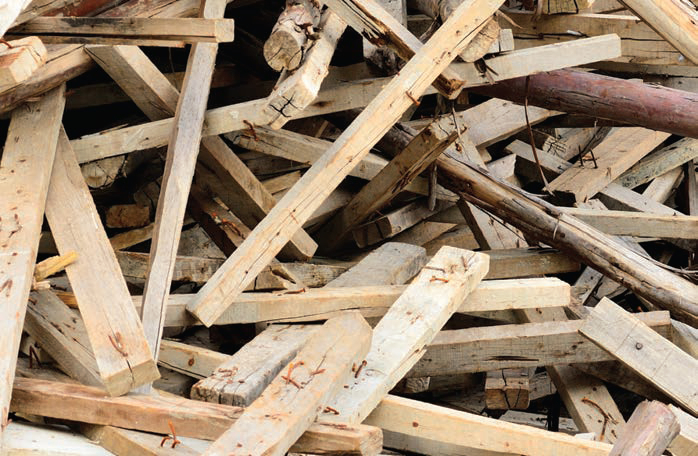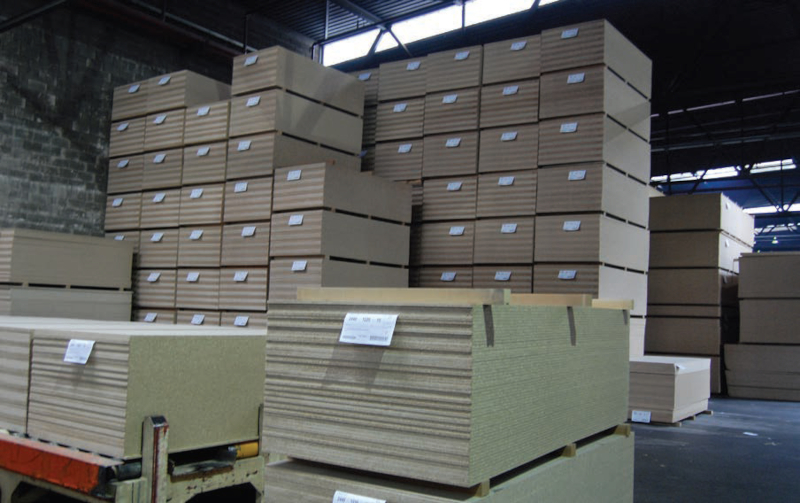BC centre embarks on recycled wood research
13 July 2022The BioComposites Centre at Bangor University, Wales, has embarked on a recycled wood research project to improve perspectives on use of the material in particleboard
The interest in utilisation of recycled wood in construction materials can be traced back to about 1996 with one of the first conferences that was held by the USDA Forest Service.
This conference looked at the use of recycled wood and paper in building applications. Since then, it is clearly evident that there has been significant increase in the use of waste materials in the production of particleboard.
In fact, it could be argued that the wood-based panel sector along with the pulp and paper industry were one of the first manufacturing sectors to address these challenges and both are now leaders in recycled content.
This can be easily put into context when these sectors are compared to the plastics industry that are only now addressing the challenges of increased recycled content in their products.
In Europe there were two key challenges for the use of recycled materials in particleboard, concerns over the levels of contamination and a consistent supply chain of these materials to the mills.
Work in Europe in the early 1990s and early 2000s therefore focused on techniques to assess wood quality and a series of research projects were undertaken to categorise the different types of waste available to the sector.
The UK was an early adopter of this relatively new feedstock. Mainstream panel mills in the UK led with the investment of recycling infrastructure and demonstrated that it was possible to use this feedstock and that there were some technical advantages.
This early adoption led to the publication by the European Panel Federation (EPF) of a voluntary standard on the levels of contamination allowed within the timber feedstock for panel production.
The EPF based these levels on the allowable ‘safe’ levels for toys with the argument that if the limits are safe for children’s toys they should be safe for particleboard.
These levels were further clarified in the UK PAS standards 104 Wood recycling in the panel board manufacturing industry and 111 Specification for the requirements and test methods for processing waste wood, which provides definitions, minimum requirements, and test methods for processing waste wood into materials intended for use in suitable applications or end products including that for use in particleboard manufacture.
Initial recycling infrastructure investments included simple sorting and screening systems that allowed the mills to recycle wood from construction applications back into the particleboard. This early investment enabled mills to successfully recycle up to around 20% of this feedstock back into flooring and worktop grades of particleboard.
From these early days this sector has grown and increased dramatically. In the UK, recycled content in certain particleboard grades can be as much as 85%, while in Italy it is even higher.
This increase was driven by regulations to reduce landfill disposal but the predominant reason for this increase as been the cost benefit opportunities.
As a working definition recycled softwood is defined as a wood source derived from reclaimed softwood products that have reached the end of their service life. This resource consists of softwood from used pallets, damaged pallets, joinery off-cuts and ex-building site components (structural and non-structural). Initially the primary source of recycled material was mostly crushed pallets. However, as demand for recycled wood increased the quality of the feedstock varied and included end of life particleboard.
To match this demand, recycling technologies needed to clean lower grades of wood, removing more grit, laminates and metals. This then led to the development of bespoke cleaning processes from equipment manufacturers such as Valmet and Pal.
Over the years the industry has had to rely on lower grades of recycled feedstocks with higher levels of contamination. To address these issues research has continued to look at these challenges.
To improve our understanding of levels of contamination, the BioComposites Centre at Bangor University has recently, through the Welsh Government Circular Economy Team, invested in new equipment to help address these challenges. The investment amounts to up to £500,000.
The key objective is to ensure timber is used for the most appropriate application and its value is maintained within the circular economy. New equipment includes a timber grader to assess the strength of timber beams, a new ICP that will analyse the metal content of the wood to ensure that it is not contaminated with metal-based preservatives and a hyperspectral camera will allow the BC Centre team to understand the quality of the timber (both in terms of decay and water content).
Additionally, the Centre has invested in a new scanning electron microscope with the ability to visualise metals contamination within the wood and a new advanced mechanical testing machine which will expand the types of mechanical testing that the BC Centre can undertake, both on solid wood and on panel products.
WHAT DOES THE FUTURE HOLD FOR RECYCLED TIMBER AND THE PANEL BOARD INDUSTRY?
Whilst timber is a renewable resource it is not infinite, and the timing of supply and demand is key to the success of using timber as a tool for carbon abatement. The increased desire to use timber for many applications, from construction products through the transport industry to the fuel industry has seen an increased demand that has resulted in increases in prices (e.g. wood pellets reaching over €400/tonne in Germany). This has been further expatriated by world events such as Brexit and the Ukrainian war.
Ensuring the value of timber is maintained is therefore critical and cascading timber through as many long term uses as possible along with the development of circular business models that can value sequestration of carbon are therefore paramount.
However, there is still much more work to be done with methods to keep timber higher in the value chain for longer. How can we recycle timber treated with new treatment techniques, such as acetylation or resin impregnation back into particleboard and what affects will this have on the properties of the boards?
As well as the technical challenges, new business models and partnerships are needed. Manufacturers will need to work closely within the supplier / customer chains to promote the environmental benefits of the recycled resource and ensure that wood-based panels remain materials for the future.

